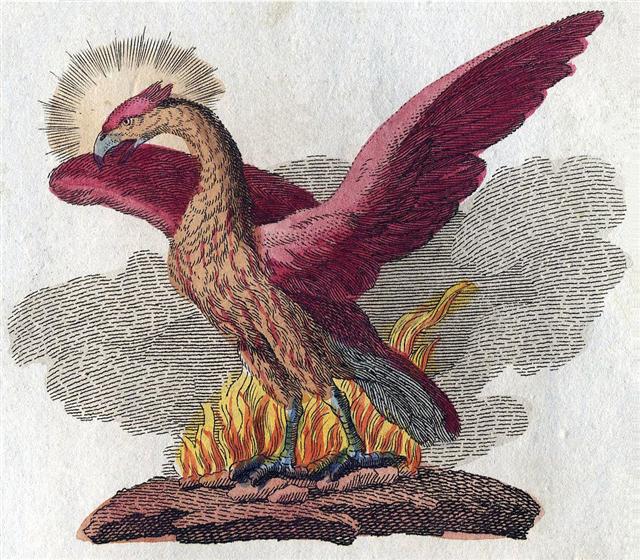And then we have to take Te Kioe Uri into acount, i.e. the 4th kuhane station on the mainland:
... The dream soul of Hau Maka continued her journey and went ashore on the (actual Easter) Island. The dream soul saw the fish Mahore, who was in a (water) hole to spawn (?), and she named the place 'Pu Mahore A Hau Maka O Hiva'. The dream soul climbed up and reached the rim of the crater. As soon as the dream soul looked into the crater, she felt a gentle breeze coming toward her. She named the place 'Poko Uri A Hau Maka O Hiva'. The dream soul continued her search for a residence for King Matua. [Rather: ... for a flat coastal area usable as a landing stage (te maara mo noho) for the King (te ariki) and for the Gods (mo atua). - he rarama he oho mai te kuhane (crossed out: i te maara) he rarama i te maara mo noho mo te ariki mo atua. The place was for Hotu and not for his father Matua who was remaining in Hiva.] The dream soul of Hau Maka reached (the smaller crater) Manavai and named the place 'Te Manavai A Hau Maka O Hiva'. The dream soul went on and reached Te Kioe Uri. She named the place 'Te Kioe Uri A Hau Maka O Hiva' ... [E:6-7] Barthel has explained this kioe as equivalent to kiore = rat. As to the meaning of uri we ought to consider the translation 'dark': ... In China, with Capricornus, Pisces, and a part of Sagittarius, it [Aquarius] constituted the early Serpent, or Turtle, Tien Yuen; and later was known as Hiuen Ying, the Dark Warrior and Hero, or Darkly Flourishing One, the Hiuen Wu, or Hiuen Heaou, of the Han dynasty, which Dupuis gave as Hiven Mao. It was a symbol of the emperor Tchoun Hin, in whose reign was a great deluge; but after the Jesuits came in it became Paou Ping, the Precious Vase. It contained three of the sieu, and headed the list of zodiac signs as the Rat, which in the far East was the ideograph for 'water', and still so remains in the almanacs of Central Asia, Cochin China, and Japan ... Uri. 1. Dark; black-and-blue. 2. Green; ki oti te toga, he-uri te maúku o te kaiga, te kumara, te taro, te tahi hoki me'e, once winter is over, the grasses grow green, and the sweet potatoes, and the taro, and the other plants. Uriuri, black; very dark. Vanaga. Uriuri, black, brown, gray, dark, green, blue, violet (hurihuri). Hakahurihuri, dark, obscurity, to darken. P Pau.: uriuri, black. Mgv.: uriuri, black, very dark, color of the deep sea, any vivid color. Mq.: uiui, black, brown. Ta.: uri, black. Churchill. Uli, s. Haw., the blue sky; adj., blue, cerulean, green; uli-uli, verdure; adj., green, dark-coloured, black. Sam., Tong., Fak., uli; Tah., uri, blue-black, any dark colour. Fornander. ... 1. Hanga Te Pau, the landing site of Ira and his band of explorers, is the natural anchorage for those approaching Vinapu by sea. The remarkable stone fronts of the ahu of Vinapu are all facing the sea. The explorers landed at Hanga Te Pau during the month 'Maro', that is, June ... 2. The cult place of Vinapu is located between the fifth and sixth segment of the dream voyage of Hau Maka. These segments, named 'Te Kioe Uri' (inland from Vinapu) and 'Te Piringa Aniva' (near Hanga Pau Kura) flank Vinapu from both the west and the east. The decoded meaning of the names 'the dark rat' (i.e., the island king as the recipient of gifts) and 'the gathering place of the island population' (for the purpose of presenting the island king with gifts) links them with the month 'Maro', which is June. Thus the last month of the Easter Island year is twice connected with Vinapu. Also, June is the month of summer solstice [a mistake: south of the equator it is winter solstice], which again points to the possibility that the Vinapu complex was used for astronomical purposes. 3. On the 'second list of place names', Hanga Te Pau is called 'the middle (zenith) of the land' (he tini o te kainga). This may refer to a line bisecting the island, but it can just as easily mean the gathering of a great number (of islanders). The plaza (130 x 130 meters) would have been very well suited for this purpose.
Hanga Te Pau did not belong to Hau Maka, because his dream soul did not name it. Instead it was the Landing Site of Ira. ... Makoi named the place Hanga Te Pau, 'the landing site of Ira' [te tomonga o Ira]. So that they would remember (? he aringa, literally, 'as face'), the open side [ko mua] of Hanga Te Pau was given this name ... [E:18] Makoi remembered to put the name Hanga Te Pau A Ira on his map when he went along alone withershins around the island:
Assuming we should count with 6 (= 360 / 60) days for each of his stations we will find the right ascension day distance from Hanga Te Pau to Apina Nui to be (60 - 50) * 6 = *60:
The true northern spring equinox was not in March 21 (80) but in March 20 (79) ... Ecclesiastically, the equinox is reckoned to be on 21 March (even though the equinox occurs, astronomically speaking, on 20 March in most years) ... and when counting weeks (during the night) instead of days (in the daylight) the corresponding measure should therefore be 79 weeks.
|
||||||||||||||||||||||||||||||||||||||||||||||||||||||||||||||||||||||||||||||||||||||||||||||||||||||||||||||||||||||||||||||||||||||||||||||||||||||||||||||||||||||||||||||||||||||||||||||||||||||||||||||||||||||||||||||||||||||||||||||||||||||||||||||||||||||||||||||||||||




